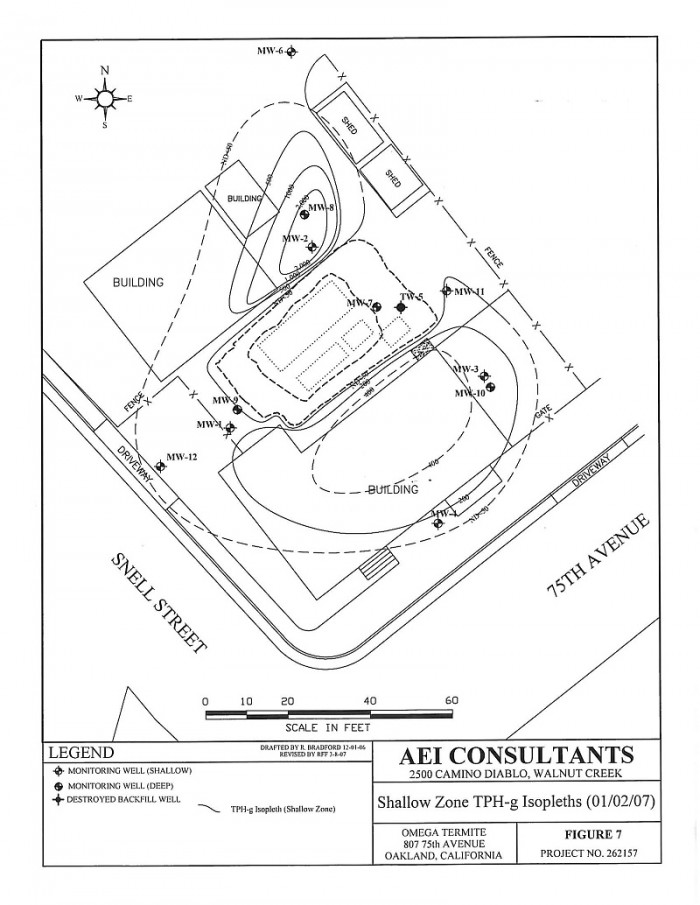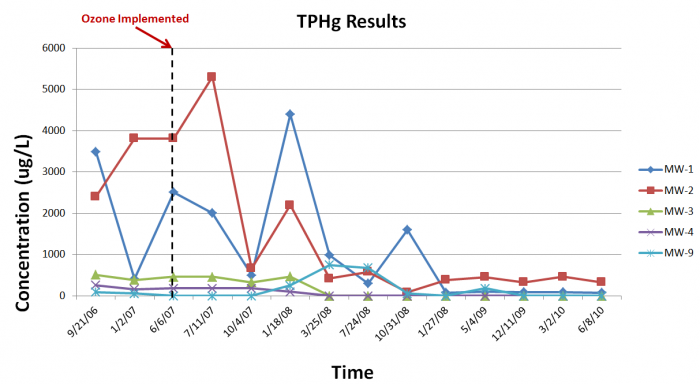Omega Termite – Oakland, CA
In-Situ Chemical Oxidation by way of Ozone from H2O Engineering Solves Water Quality Issues on in Oakland, CA.
Project Snapshot
Existing Conditions:
A fuel release contaminated soil and groundwater on the property.
H2O Solution:
H2O Engineering was contracted to build a system capable of injecting concentrated ozone gas. H2O Engineering recommended the use of an OSU20-52 cabinet with 10 in-situ oxidation points, each estimated at achieving a 10 foot radius of influence.
The ozone system was turned off in March of 2010 and additional samples were taken in June 2010. With no rebound detected, in July 2010, AEI submitted request for site closure and in October 2010, no further remediation was required.
Challenge:
In September 1996, AEI Consultants (AEI) removed three gasoline underground storage tanks (USTs) – (1) 8,000 gallon, (1) 1,000 gallon, and (1) 500 gallon – after a fuel release proved to have contaminated soil and groundwater on the property.
Soil borings supported that near-surface sediments spanned several water-bearing zones and were separated by clay layers–a challenging lithology for remediation. The diagram below shows the extent of the petroleum hydrocarbon and benzene plumes beneath the site. Other contaminates included TPHd and TPHmo (not shown).
Solution:
As the selected equipment provider, H2O Engineering, Inc. worked with AEI to complete a Remediation Strategy Questionnaire that assisted in determining the size of the system, sparge point layout recommendations, an overall clean-up plan and timeline.
Ozone sparging began in June 2007.Equipment:
(1) 2.7 lbs/day, 20 valve cabinet unit (OSU20-52)
(10) Injection wells (estimated to achieve 10-foot Radius of Influence).The site layout map above shows the locations of each sparge well in relation to the ozone unit.
Results:
The ozone system was turned off in March of 2010 and additional samples were taken in June 2010. With no rebound detected, in July 2010, AEI submitted request for site closure and in October 2010, no further remediation was required. The graphs below show the TPHg and TPHd reductions in five of the contaminated wells.



